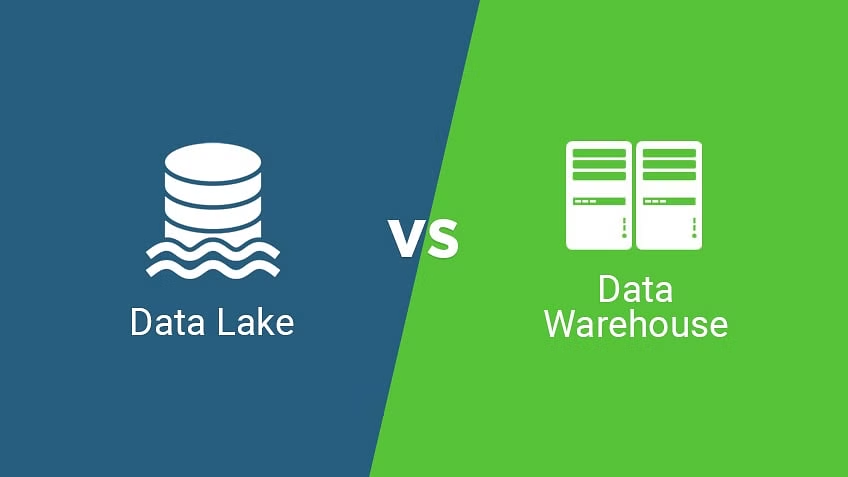What are the differences between a Data warehouse and a Data Lake?
 Nishant Mahto
Nishant Mahto
Before discussing, let me define these significant terms Data warehouse and Data lake.
Data warehouse: It is a combined repository of integrated and structured data collected from various sources within an organization. It is designed to support business intelligence activities such as reporting, analysis, and decision-making.
Now here the question arises what's the reason behind creating a data warehouse?
The purpose of a data warehouse is to provide a common view of an organization's data, allowing users to access and analyze information from different systems and databases in a standardized format. They play a vital role in enabling businesses to analyze large volumes of data and gain valuable insight into their functioning, customer behavior, market trends, and more.

Data Lake: A data lake is a centralized repository that allows you to store large volumes of structured, semi-structured, and unstructured data at any scale. It is designed to store raw data in its original format, without requiring any predefined schema or organization. The concept of a data lake was generated as a response to the trouble of storing and analyzing big data.
In a data lake, data is typically stored in its original form, whether it is logs, sensor data, social media feeds, documents, or any other type of data. This raw data can be stored in several formats such as files, objects, or blobs.
Now come to our main topic, How does a data warehouse differ from a data lake?
Let me tell you the major differences between a data warehouse and a data lake:
1) Data Warehouses and Data Lakes serve different purposes in data processing. A data warehouse is designed to handle structured data, which is typically organized into predefined schemas. On the other hand, a data lake is capable of processing a variety of data types, including structured, semi-structured, unstructured, and raw binary data.
2) Data Warehouses utilize databases optimized for storing structured data, which can involve significant costs in terms of hardware, licensing, and maintenance. In contrast, data lakes leverage low-cost storage devices, such as object storage or distributed file systems, to store data in its original format, reducing infrastructure expenses.
3) Data Warehouses commonly employ the Extract-Transform-Load (ETL) process. This involves extracting data from various sources, transforming it into a consistent format or structure, and then loading it into the warehouse for analysis and reporting. In contrast, data lakes often follow the Extract-Load-Transform (ELT) process, where data is ingested into the lake in its raw form, and transformations are applied later during analysis.
4) Data Warehouses operate on a schema-on-write principle. This means that data must conform to a predefined schema before it is loaded into the warehouse. In contrast, data lakes adopt a schema-on-read approach, where data is stored as-is without imposing a specific schema. The flexibility of schema-on-read allows for exploratory data analysis and enables data scientists and analysts to define schemas and structures based on specific use cases when reading the data from the lake.
Data Lakes serve as a central repository for storing vast amounts of raw and diverse data. This data can be consumed into the lake without immediate transformations or processing, preserving the data's original form and providing a flexible environment for data exploration, experimentation, and future analysis. Data lakes can handle various data types and offer flexibility, data warehouses are optimized for structured data, providing fast query performance and efficient storage for structured analytics and reporting purposes.
It's common to see organizations adopting a hybrid approach, where data from a data lake is transformed and loaded into a data warehouse for structured analytics, reporting, and business intelligence, combining the strengths of both environments.
So, embrace the power of technology, and let it fuel your path toward digital transformation.
Subscribe to my newsletter
Read articles from Nishant Mahto directly inside your inbox. Subscribe to the newsletter, and don't miss out.
Written by

Nishant Mahto
Nishant Mahto
I am a highly skilled developer engrossed in crafting a solution for real-world problems and fascinated by ML and DevOps.